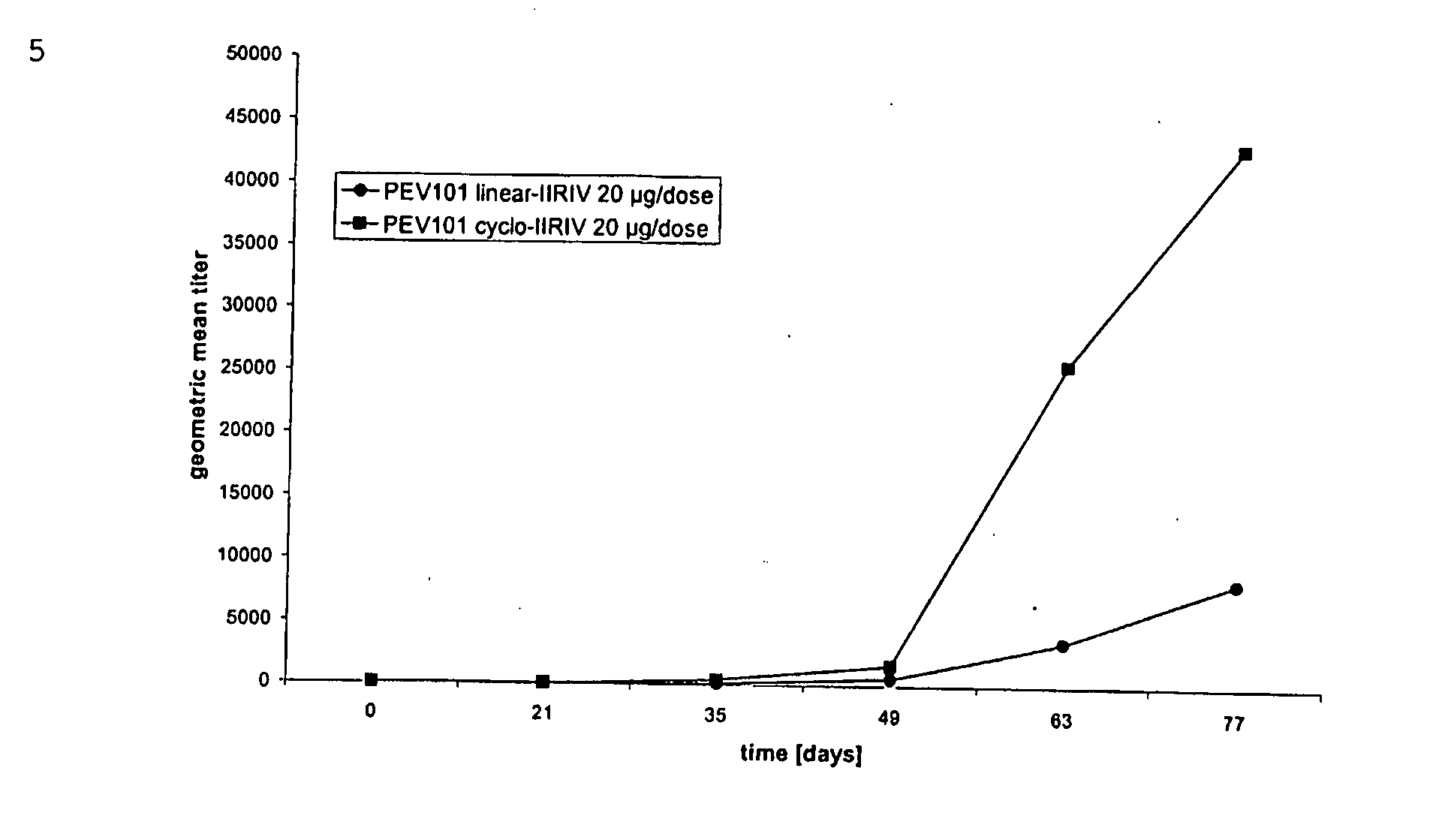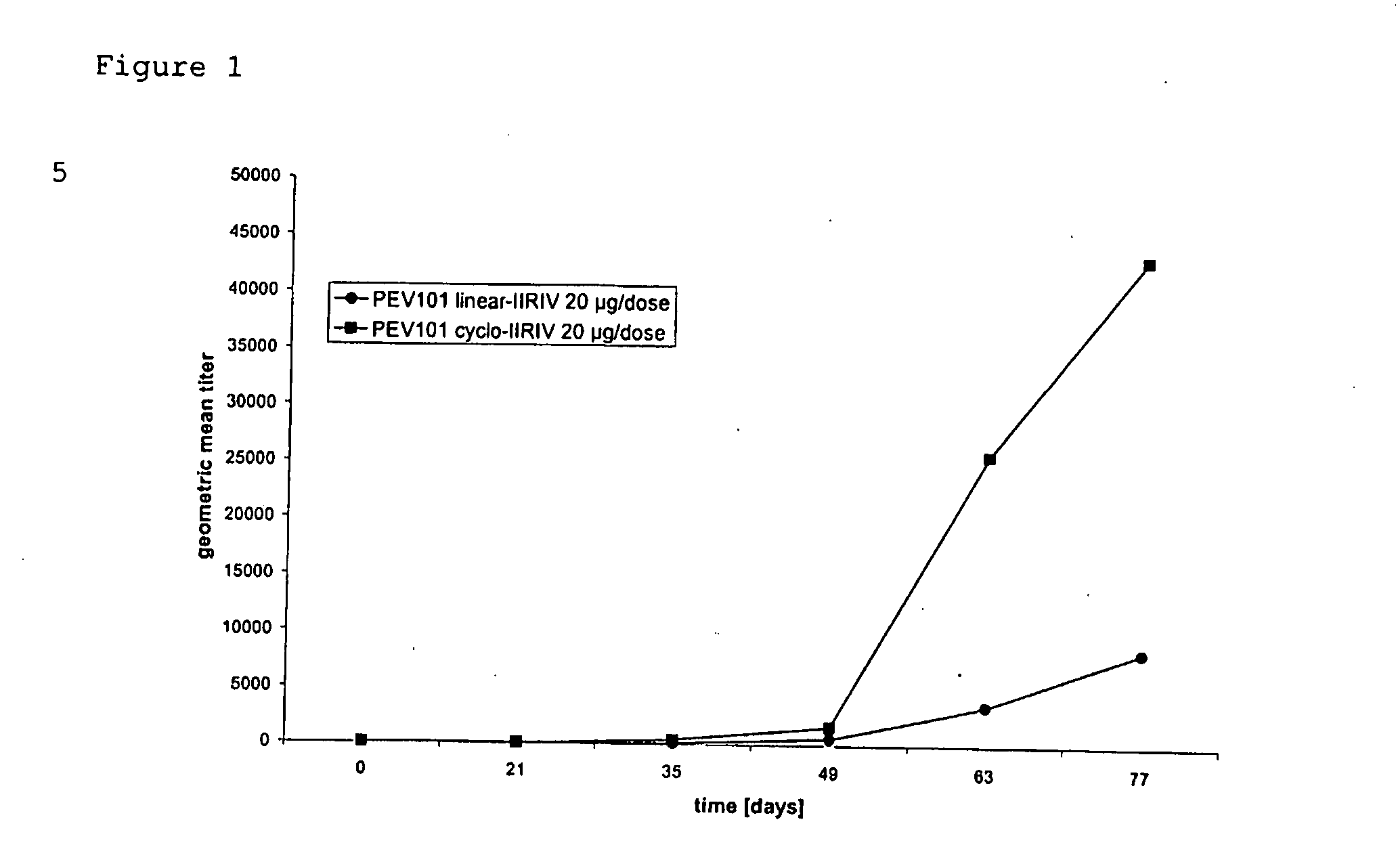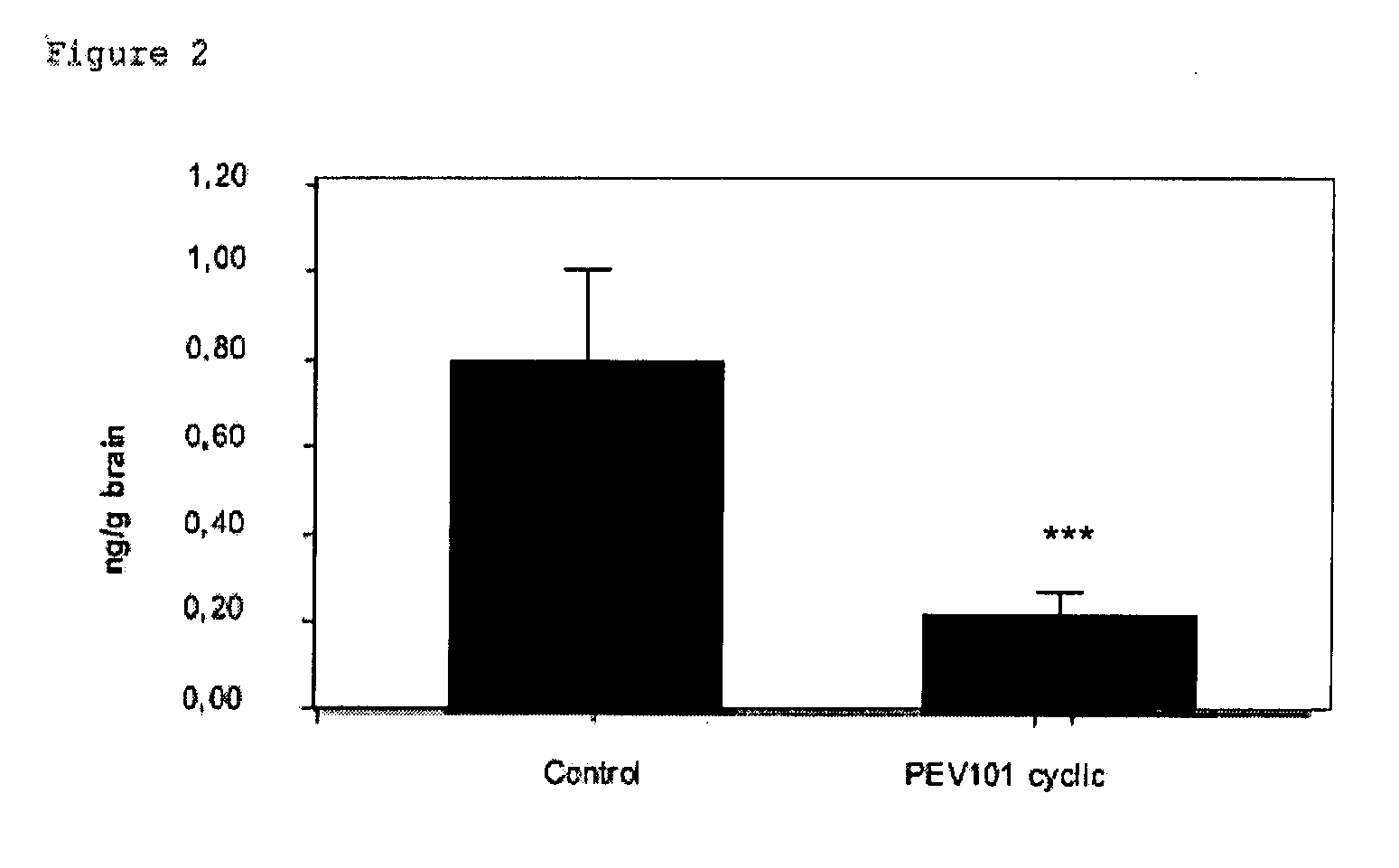Immunogenic compositions of cyclic peptides derived from the beta-amyloid peptide
a technology of beta-amyloid peptide and composition, which is applied in the direction of peptide/protein ingredients, depsipeptides, viruses, etc., can solve the problems of no therapy approved, the pathology is not fully understood by which mechanism it is actually driven, and the need for enormous expenditures, etc., to achieve low metabolic stability of linear peptides, and hinder the formation of amyloid plaques
- Summary
- Abstract
- Description
- Claims
- Application Information
AI Technical Summary
Benefits of technology
Problems solved by technology
Method used
Image
Examples
example 1
Preparation of the Virosomes
[0151] For the preparation of PE-mimetic-IRIV, a solution of purified Influenza A / Singapore hemagglutinine (4 mg) in phosphate buffered saline (PBS) was centrifuged for 30 min at 100 000 g and the pellet was dissolved in PBS (1.33 ml) containing 100 mM octaethyleneglycolmonodecylether (PBS-OEG). Amyloid-peptide-phosphatidylethanolamin conjugates (4 mg), phosphatidylcholine (32 mg; Lipoid, Ludwigshafen, Germany) and phosphatidyl-ethanolamine (6 mg) were dissolved in a total volume of 2.66 ml of PBS-OEG. The phospholipids and the hemagglutinine solutions were mixed and sonicated for 1 min. This solution was centrifuged for 1 hour at 100 000 g and the supernatant was sterilized by filtration. Virosomes were formed by detergent removal (SM BioBeads, BioRad, Glattbrugg, Switzerland).
example 2
Vaccination Procedure
[0152] Double transgenic F1 mice in FVB×C57Bl genetic background (n=36) were derived by crossing APP [V717I] with PS1 [A246E] transgenic mice (Moechars et al., 1999; Dewachter et al., 2000). All mice were genotyped by PCR at weaning (3 weeks), and re-genotyped at the onset of the study. Mice were randomized for the trials, blinded for the care-takers and experimentators, were age- and sex-matched in the control and treated groups and had free access to water and food. Mice were kept under a reversed day-night cycle with 12 hours light and 12 hours darkness starting at 7 am. All mice were pre-immunized three weeks before the onset of the proper vaccination, at age 5-6 weeks by intra-muscular injection of 100 μl of purified influenza virus (H1 / N1 A / Sing, 10 μg / ml in phosphate-buffered saline). This was done to reflect the human situation, since practically everybody tests positive for anti-influenza antibodies. A total of 24 double transgenic mice were vaccinated...
example 3
Immunohistochemistry and Aβ ELISA of Brain Tissue
[0153] Mice were anaesthetized with a mixture of ketalar (Ketamin), rompun (Xylazin 2%) and atropin (2:1:1). Blood was collected by heart puncture and plasma collected by centrifugation at 14.000 rpm at 4° C. for 10 minutes. The mice were flushed trans-cardiacally with ice-cold saline. Brains were removed and left and right hemispheres were processed for biochemical and immunohistochemical analysis. One hemisphere was immediately immersed in liquid nitrogen and stored at −70° C. until homogenization for analysis of Aβ peptides by ELISA. The other hemisphere was fixed in 4% paraformaldehyde for immunohistochemistry. All collected samples were labeled with the ID number of the mouse, blind for the annalists and without any reference to the type of treatment.
[0154] Sagittal vibratome sections (40 μm) were cut for free floating incubations and stored at 4° C. until staining. A total of 25 consecutive sections per b...
PUM
| Property | Measurement | Unit |
|---|---|---|
| Immunogenicity | aaaaa | aaaaa |
| Antigenicity | aaaaa | aaaaa |
Abstract
Description
Claims
Application Information
 Login to View More
Login to View More - R&D
- Intellectual Property
- Life Sciences
- Materials
- Tech Scout
- Unparalleled Data Quality
- Higher Quality Content
- 60% Fewer Hallucinations
Browse by: Latest US Patents, China's latest patents, Technical Efficacy Thesaurus, Application Domain, Technology Topic, Popular Technical Reports.
© 2025 PatSnap. All rights reserved.Legal|Privacy policy|Modern Slavery Act Transparency Statement|Sitemap|About US| Contact US: help@patsnap.com



